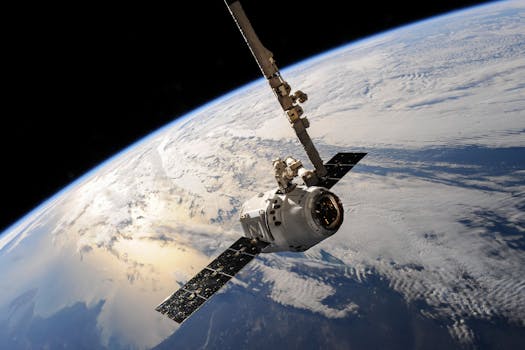The Future of Satellites: Revolutionizing Global Connectivity
The future of satellites is poised to revolutionize global connectivity, enabling faster and more reliable communication networks. With advancements in space technology, satellites are becoming increasingly important for a wide range of applications, from navigation and communication to weather forecasting and Earth observation.

The Future of Satellites: Revolutionizing Global Connectivity
The future of satellites is poised to revolutionize global connectivity, enabling faster and more reliable communication networks. With advancements in space technology, satellites are becoming increasingly important for a wide range of applications, from navigation and communication to weather forecasting and Earth observation. The focus keyword future of satellites is becoming a crucial aspect of modern life, and its impact will only continue to grow in the coming years.
One of the most significant developments in the future of satellites is the launch of satellite constellations, which involve deploying hundreds or even thousands of small satellites into low Earth orbit. These constellations are designed to provide global coverage and enable faster and more reliable communication networks. Companies such as SpaceX, OneWeb, and Amazon’s Kuiper Systems are leading the charge in this area, with plans to launch thousands of satellites in the coming years.
Another key trend in the future of satellites is the increasing use of advanced materials and technologies, such as 3D printing and artificial intelligence. These technologies are enabling the development of more efficient and cost-effective satellites, which can be used for a wide range of applications. For example, 3D printing is being used to create complex satellite components, such as antennas and propulsion systems, while artificial intelligence is being used to improve satellite navigation and communication systems.
Advancements in Satellite Technology
Advancements in satellite technology are driving the growth of the satellite industry, enabling the development of more efficient and cost-effective satellites. One of the most significant advancements is the development of electric propulsion systems, which are more efficient and cost-effective than traditional chemical propulsion systems. Electric propulsion systems use electrical energy to accelerate ions or electrons, generating a high-specific-impulse thrust. This enables satellites to achieve higher speeds and longer mission durations, while also reducing fuel consumption and emissions.
Another key advancement in satellite technology is the development of advanced materials, such as carbon fiber and nanomaterials. These materials are being used to create lighter and stronger satellite components, such as satellite structures and antennas. For example, carbon fiber is being used to create satellite booms and antennae, while nanomaterials are being used to create advanced coatings and thermal protection systems.
Applications of Satellites
Satellites have a wide range of applications, from navigation and communication to weather forecasting and Earth observation. One of the most significant applications of satellites is in the field of navigation, where they are used to provide location information and timing signals. For example, the Global Positioning System (GPS) relies on a network of satellites to provide location information and timing signals, which are used by a wide range of applications, from aviation and maritime to automotive and consumer electronics.
Another key application of satellites is in the field of communication, where they are used to provide voice, video, and data services. For example, satellites are used to provide broadband internet access to remote and underserved communities, where traditional communication infrastructure is limited or non-existent. Satellites are also used to provide communication services for emergency response and disaster relief, where traditional communication infrastructure may be damaged or destroyed.
Challenges and Opportunities
Despite the many benefits of satellites, there are also several challenges and opportunities that need to be addressed. One of the most significant challenges is the growing problem of space debris, which poses a significant risk to satellite operations and the environment. Space debris includes a wide range of objects, from old satellites and rocket parts to fragments of explosions and collisions. To address this challenge, there is a growing need for sustainable and responsible satellite operations, including the development of debris removal technologies and the implementation of sustainable satellite design and operation practices.
Another key challenge is the need for international cooperation and regulation, to ensure that satellite operations are safe, secure, and sustainable. This includes the development of international standards and guidelines for satellite operations, as well as the implementation of regulatory frameworks to govern the use of satellites. There is also a growing need for public-private partnerships, to leverage the resources and expertise of the private sector and to accelerate the development and deployment of satellite technologies.
